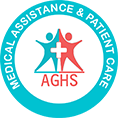
Cardiac care has become a specialty in India. It combines the latest innovations in cardiac care and technology with unmatched expertise from leading cardiologists and cardiothoracic surgeons. Some of the leading hospitals have the distinctions of providing comprehensive cardiac care spanning from basic facilities for preventive cardiology to the most sophisticated curative medicine. The technology is contemporary and world class, and the volumes handled match global benchmarks. They also specialize in offering surgery to high-risk patients with the introduction of innovative techniques of minimally invasive and robotic surgery.
Cardiac Care: Diagnostic studies, treatment and surgery
Diagnostic studies:
- EKG, Echocardiography (ECHO), TEE ECHO ( transesophageal echocardiography), Stress ECHO, Holter test
Cardiac imaging studies:
- Cardiac CT, Coronary MR angiography
- Coronary, carotid, renal, peripheral angiography
Cardiac surgeries:
- Coronary artery bypass graft (CABG)
- Valvuloplasty (Valve surgery)
- Minimally invasive cardiac surgery
- Aortic aneurysm surgery
- Surgery for arrhythmias
Surgery for congenital heart diseases in children:
- Patent ductus arteriosus (PDA)
- ventricular septal defect (VSD)
- Atrial septal defect ( ASD)
- Tetralogy of Fallot (TOF)
- Transposition of great vessels ( TGA)
- Cardiac electrophysiology/pacing
- Pacemaker and defibrillator implantation
- Cardiac electrophysiologic studies
- Radio-frequency catheter ablation
CORONARY ARTERY BYPASS GRAFT (CABG)
This is a type of surgery used to treat coronary artery disease. People with coronary artery disease have their heart vessels get clogged with fatty deposits which blocks blood supply to heart muscles leading to a weak heart unable to pump blood effectively (also called heart attack).
Your doctor may initially try something called “Angioplasty” which involved placing plastic tube into the blocked artery and a tiny balloon to open the blockage. A tiny mesh called “STENT” is then left inside the artery to hold it open.
CABG is usually recommended if you continue to have chest pain is not responding to medications and either STENTING has failed or you are not a candidate for STENTING OR you have severe blockage that can lead to death.
During the CABG surgery, a healthy piece of blood vessel from other part of the body (called graft) is used to re-route blood in heart.
You should discuss with your doctor all the options for your condition; check the pros and cons of the possible interventions before making any decision.
You will then get detailed instructions from the hospital on how to prepare for surgery, information on the surgical procedure, post-operative management and rehabilitation. Ask about the possible complications and post-operative precautions.
Valve Surgery
Heart valve surgery is a procedure to treat heart valve disease. In heart valve disease, at least one of the four heart valves that keep blood flowing in the correct direction through your heart doesn’t function properly. In heart valve surgery, your surgeon repairs or replaces the affected heart valves.
Minimal Invasive Surgery
In minimally invasive heart surgery, heart (cardiac) surgeons perform heart surgery through small incisions in the right side of your chest, as an alternative to open heart surgery.
Surgeons perform many minimally invasive heart surgeries, including:
- Aortic valve surgery
- Atrial septal defect closure
- Atrioventricular canal defect (also called atrioventricular septal defect) surgery
- Heart valve surgery to treat heart valve disease
- Maze heart surgery to treat atrial fibrillation
- Mitral valve surgery
- Saphenous vein harvest (removing a vein from your leg) for coronary bypass surgery
- Tricuspid valve surgery
Doctor team will work with you to determine whether minimally invasive heart surgery is an option.
CHEST PAIN
Having chest pain does not mean that you are having heart attack. But, you must not ignore the symptom especially if there are other symptoms such as pain, or discomfort in center of chest, pain, tingling or discomfort in other part of body such as arm, back, and face, shortness of breath, sweating, racing heart and feeling of dizziness.
Consult your doctor and get evaluated for risk of heart attack. You might need a complete health check to assess your risk of heart attack , in addition to more specific tests such as some blood tests, EKG, stress test and cardiac catheterization (which shows whether any of heart vessels are clogged).
If you are having a heart attack, you will need treatment to reduce the damage to heart and help with pain. The sooner you get treatment, better the treatment works.
HEART FAILURE SURGERY
Heart failure is a chronic disease needing lifelong management. However, with treatment, signs and symptoms of heart failure can improve, and the heart sometimes becomes stronger. Treatment may help you live longer and reduce your chance of dying suddenly.
IMPLANTABLE CARDIOVERTER -DEFIBRILLATOR (ICD)
An ICD is a device similar to a pacemaker. It’s implanted under the skin in your chest with wires leading through your veins and into your heart. The ICD monitors the heart rhythm. If the heart starts beating at a dangerous rhythm, or if your heart stops, the ICD tries to pace your heart or shock it back into normal rhythm. An ICD can also function as a pacemaker and speed your heart up if it is going too slow.
SURGERY FOR ARRTHYMIA
Catheter ablation is a minimally invasive procedure to treat atrial fibrillation. It can relieve symptoms and improve quality of life. During an ablation, the doctor destroys tiny areas in the heart that are firing off abnormal electrical impulses and causing atrial fibrillation.
HEART TRANSPLANT
Some people have such severe heart failure that surgery or medications don’t help. They may need to have their diseased heart replaced with a healthy donor heart. Heart transplants can dramatically improve the survival and quality of life of some people with severe heart failure. However, candidates for transplantation often have to wait a long time before a suitable donor heart is found. Some transplant candidates improve during this waiting period through drug treatment or device therapy and can be removed from the transplant waiting list.
